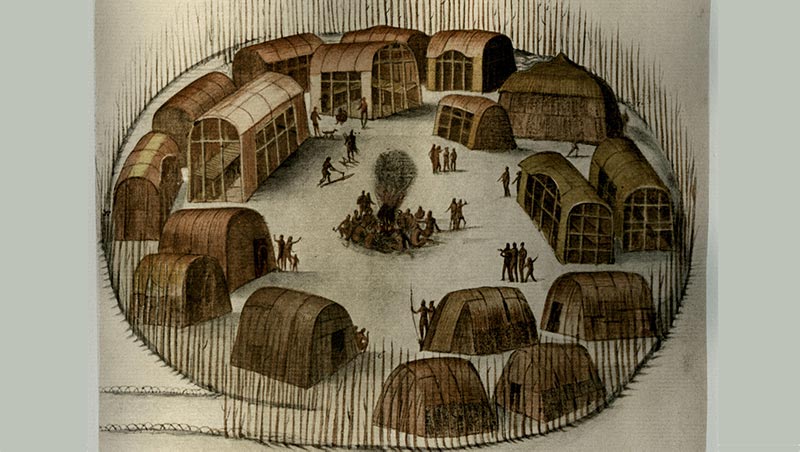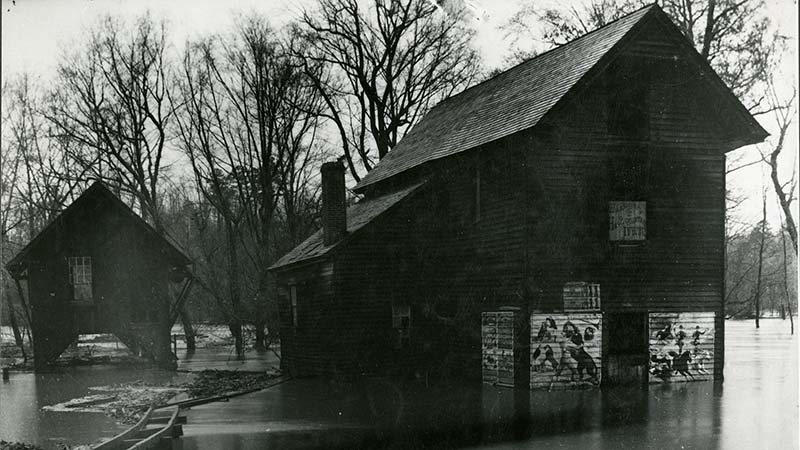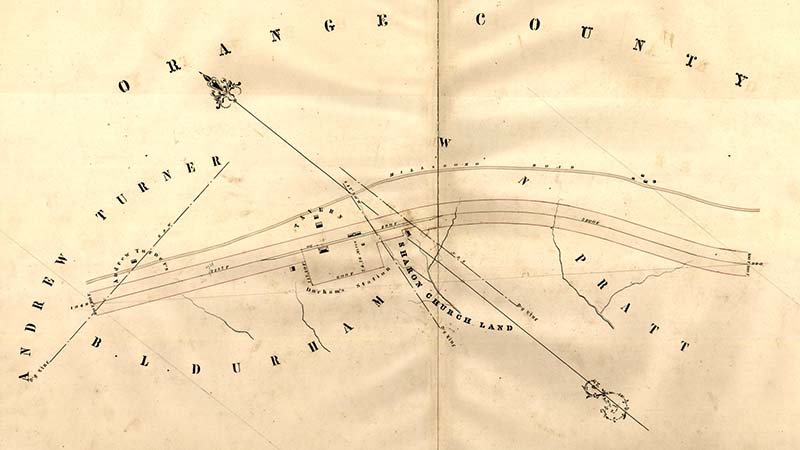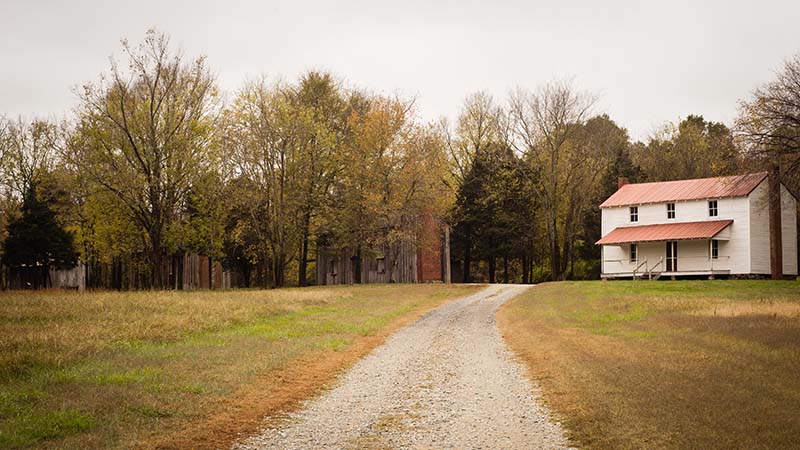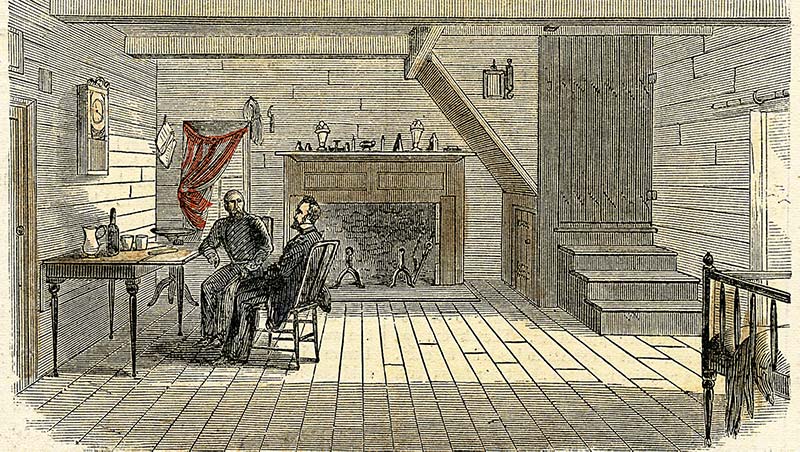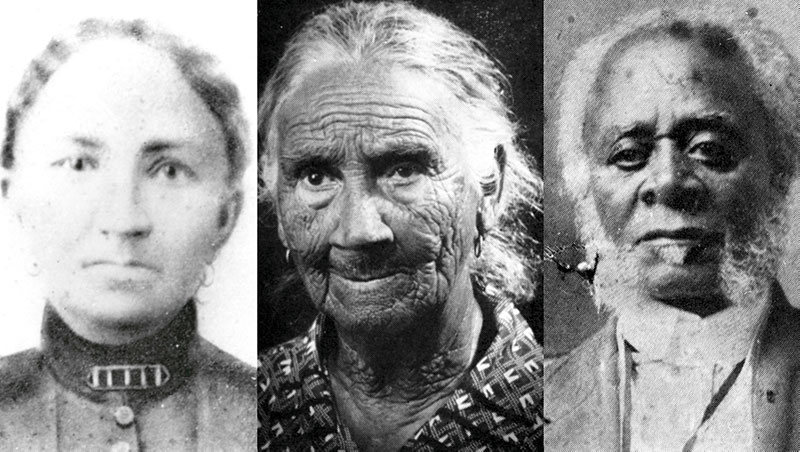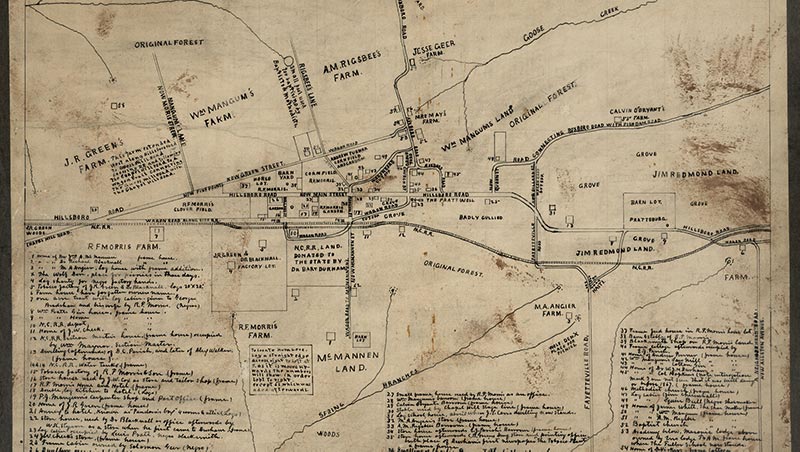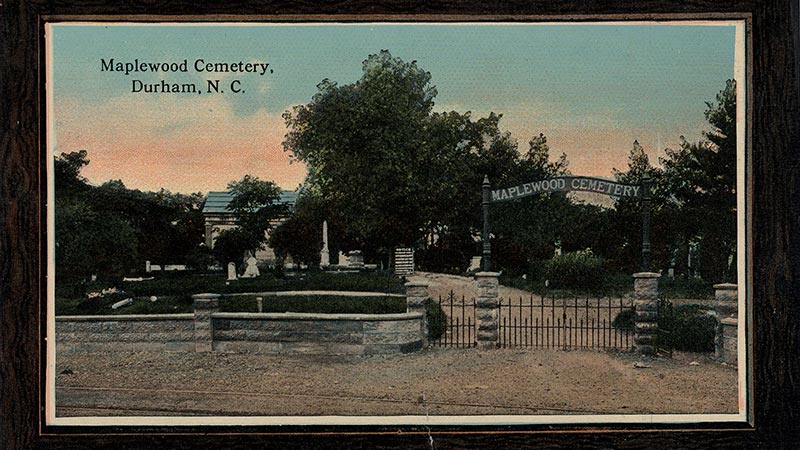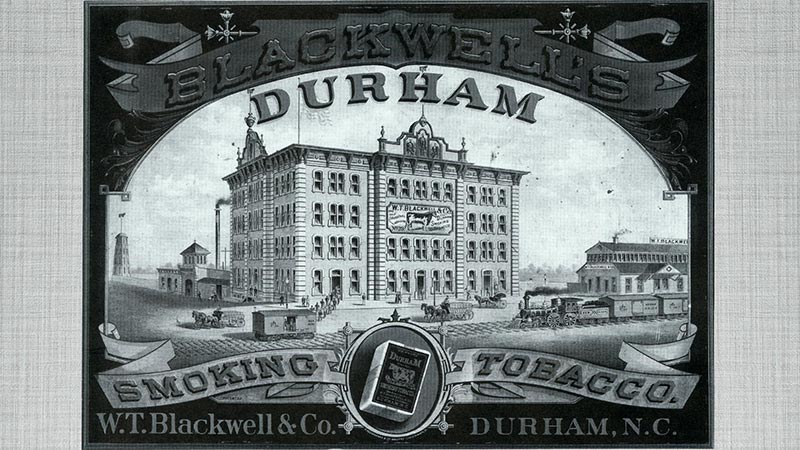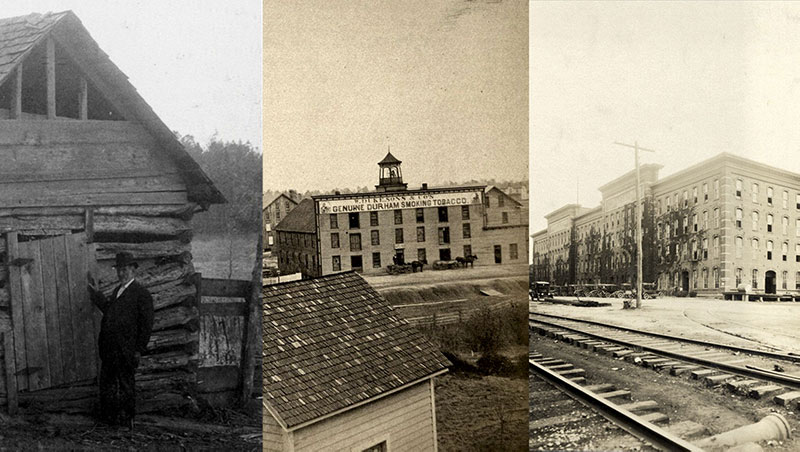
Learn - Historic Timeline
1839
1839
Post office was established at Sims Mill, one of the 32 or more watermills on the Eno River. The post office, mill and surrounding community of 200 people were named West Point. A half-century long stretch in the 19th century under Herbert Sims and his family marks the hey-day of West Point mills.
1872
1872
By the 1870s, Durham’s growth had created a pressing need for a town cemetery. In 1872, land was purchased to the west of the town limits to establish Maplewood Cemetery, the first public cemetery in Durham. Prior to the establishment of the cemetery, Durham residents had been buried in church cemeteries.



